 SPECIAL FUNCTIONS AND THEIR APPLICATIONS
SPECIAL FUNCTIONS AND THEIR APPLICATIONS  N. N. LEBEDEV Physico-Technieal Institute
N. N. LEBEDEV Physico-Technieal Institute
Academy of Sciences, U.S.S.R. Revised English Edition
Translated and Edited by Richard A. Silverman DOVER PUBLICATIONS, INC. New York Copyright 1972 by Dover Publications, Inc.
Copyright 1965 by Richard A. Silverman. All rights reserved. This Dover edition, first published in 1972, is an unabridged and corrected republication of the work originally published by Prentice-Hall, Inc., in 1965. International Standard Book Number: 0-486-60624-4
Library of Congress Catalog Card Number: 72-86228 Manufactured in the United States by Courier Corporation 60624414 
AUTHORS PREFACE

This book deals with a branch of mathematics of utmost importance to scientists and engineers concerned with actual mathematical calculations. Here the reader will find a systematic treatment of the basic theory of the more important special functions, as well as applications of this theory to specific problems of physics and engineering.
In the choice of topics, I have been guided by the goal of giving a sufficiently detailed exposition of those problems which are of greatest practical interest. This has naturally led to a certain curtailment of the purely theoretical part of the book. In this regard, it should be noted that various useful properties of the special functions which do not appear in the text proper, will be found in the problems at the end of the appropriate chapters. The book presupposes that the reader is familiar with the elements of the theory of functions of a complex variable, without which one cannot go very far in the study of special functions. However, in order to make the book more accessible to non-mathematicians, I have made a serious attempt to keep to a minimum the required background in complex variable theory. In particular, this has compelled me to depart from the order of presentation found in other treatments of the subject, where the special functions are first defined by certain convenient representations in terms of contour integrals.
The usual elementary course in complex variable theory is adequate for an understanding of most of the material presented here. It is also desirable, but not necessary, to know something about the analytic theory of linear differential equations. I occasionally draw upon other branches of mathematics and physics, but only in connection with certain specific examples, so that lack of familiarity with the relevant information is no obstacle to reading the book. It is assumed that the reader already appreciates, from his own experience, the need for using special functions. Therefore, I have not made a special point of motivating the introduction of various functions. By the same token, I have always sought the simplest way of defining the special functions and deriving their properties, without concern for historical or other considerations.
The arrangement of the material in the separate chapters is dictated by the desire to make the different parts of the book independent of each other, at least to a certain extent, so that one can study the simplest classes of functions without becoming involved with functions of a more general type. For example, I have separated the theory of the Legendre polynomials and Bessel functions of integral order from the general theory of spherical harmonics and cylinder functions, and I have also constructed the theory of spherical harmonics without recourse to the properties of the hypergeometric function. The applications of the theory were selected with the aim of illustrating the different ways in which special functions are used in problems of physics and engineering. No attempt has been made to give a detailed treatment of the corresponding branches of mathematical physics. In this regard, most space has been devoted to the application of cylinder functions, and particularly, of spherical harmonics. In preparing the present second edition of the book I have revised an earlier edition in various ways: Chapter 4 now contains a new version of the theorem on expansions in series of Hermite polynomials, which extends the previous theorem to a larger class of functions.
I have also increased the number of examples illustrating the technique of expanding functions in series of Hermite and Laguerre polynomials. In Chapter 5 there is a new section dealing with the theory of Airy functions, which are often encountered in mathematical physics and play an important role in deriving asymptotic representations of various special functions. Chapter 9, devoted to the theory of the hypergeometric function, has been completely revised, and I hope that in its present form, this chapter will be useful to theoretical physicists and others concerned with the application of the hypergeometric function, thereby partially filling a gap in the literature on the subject. I have added many new problems, which serve both as exercise material and as a source of supplementary information not to be found in the text itself. At the same time, I have removed a few problems of no particular interest. Finally, the references have been brought up-to-date.
I would like to take this opportunity to thank I. P. Skalskaya for help in preparing the present edition of my book. N.N.L. 
TRANSLATORS PREFACE

For the most part, this edition adheres closely to the revised Russian edition (Moscow, 1963). However, as always with the volumes of this series, I have not hesitated to introduce whatever improvements occurred to me in the course of working through the book.
In the present case, two departures from the original text merit special mention: 1. The Bibliography and the references cited in the footnotes have been slanted towards books available in English or the West European languages. 2. Chapters 6 and 8 have been equipped with problems, most of them taken from the excellent collection by Lebedev, Skalskaya and Uflyand (Moscow, 1955). Finally, it was deemed impractical to build in sufficiently detailed references to numerical tables of the special functions. R.A.S. 
CONTENTS

1

THE GAMMA FUNCTION

1.1.


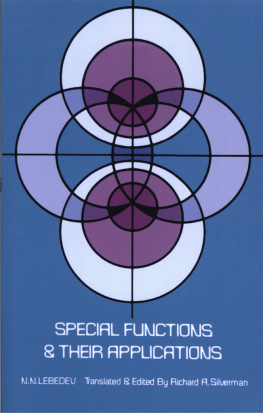
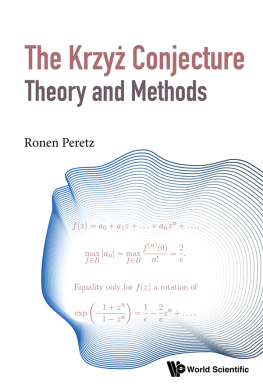
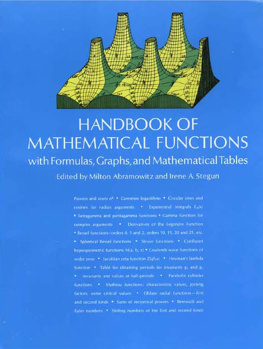


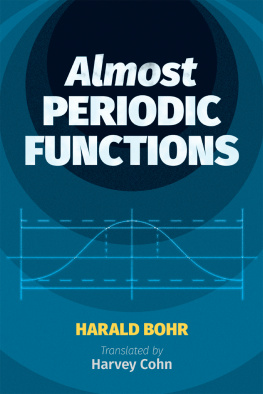

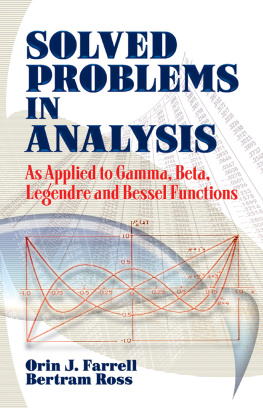
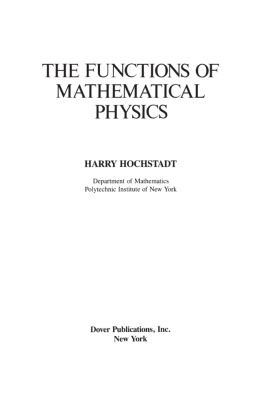
 SPECIAL FUNCTIONS AND THEIR APPLICATIONS
SPECIAL FUNCTIONS AND THEIR APPLICATIONS 
